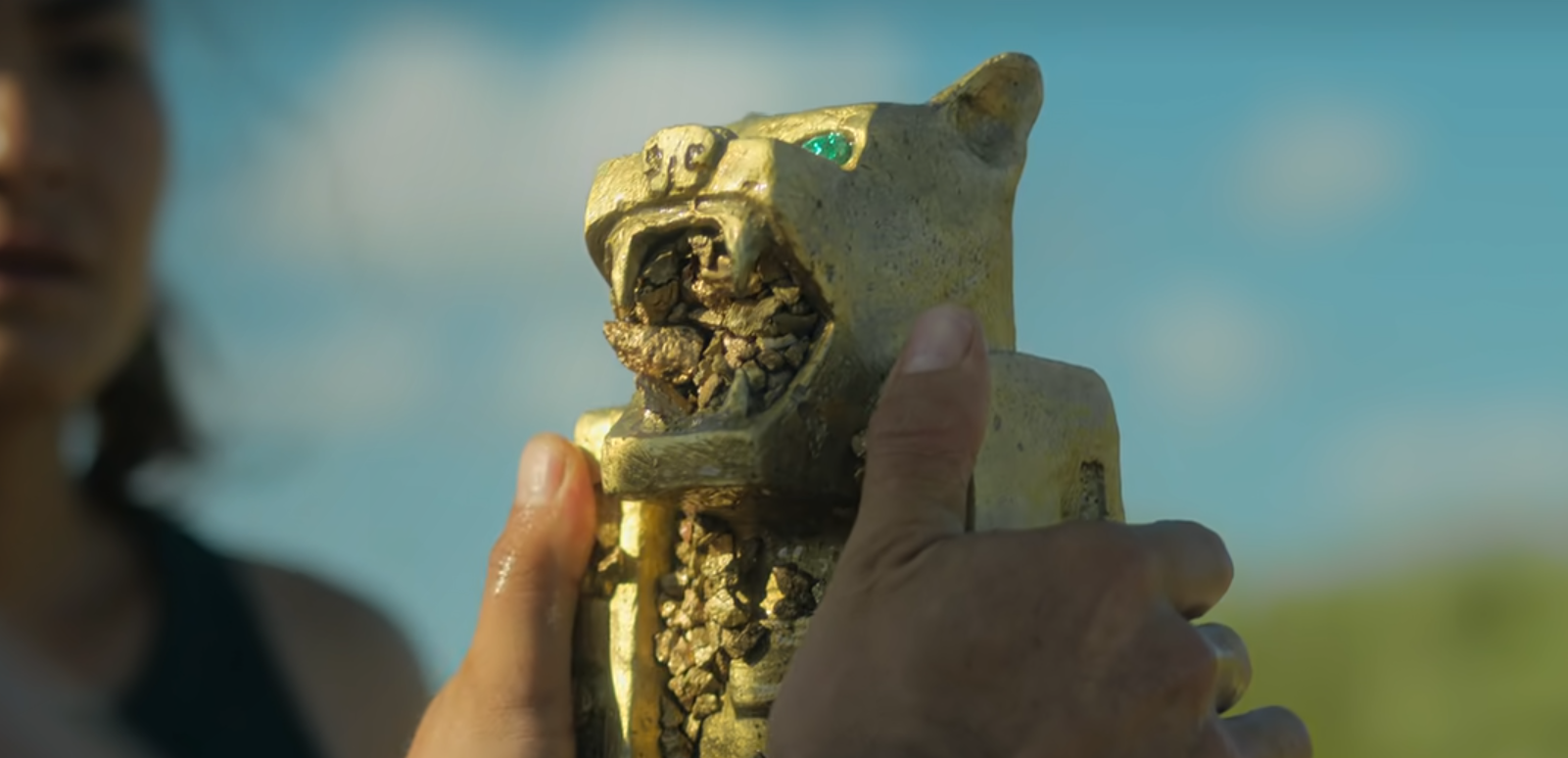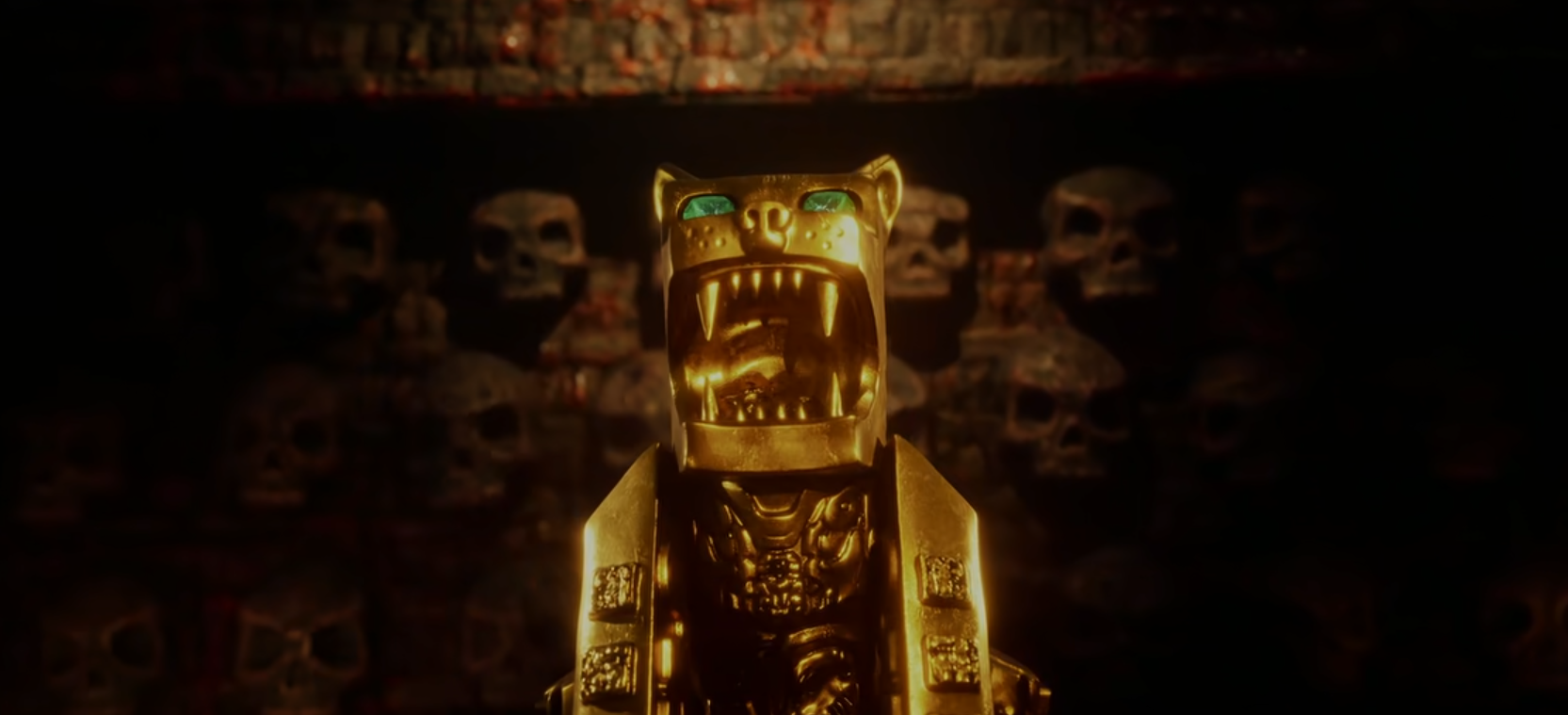In Netflix’s adventure series ‘Bandidos,’ Miguel and his group of thieves set out to find the legendary treasure of Aj Took, which includes a golden jaguar statue named “Kaan Balam.” Miguel learns more about the jaguar from Luis, one of the descendants of Francisco de Montejo, who hid the treasure back in the 16th century. The treasure hunt show unfolds in the state of Yucatán, where the Maya civilization flourished centuries ago. Despite the myths the series offers to the viewers, Aj Took and Kaan Balam didn’t or don’t exist in reality. However, the treasure and the artifact shed light on the history of the Maya people!
The Fictional Aj Took and Kaan Balam
In the first episode of ‘Bandidos,’ Luis and Miguel talk about the Maya ruler Hastoc’s treasures, which included Kaan Balam or the Golden Jaguar. In reality, however, a Maya monarch named Hastoc never existed, just like the enormous amount of fortunes he was buried with. Aj Took and Kaan Balam are fictional, created by the writers of the series. Having said that, the choice to conceive the golden jaguar statue may have real-life connections. In 2019, archaeologists opened a “cave of the Jaguar God” and discovered around 150 artifacts but not ones made of gold.

Still, the artifacts discovered in the cave can be paralleled with the artifacts Miguel and his group find in the series. The cave in real life sits below Chichén Itzá, a city built by the people of the Maya civilization, which is presently located in the state of Yucatán, the setting of the series. The cave is known as Balamku, which means “Jaguar God.” In the series, Miguel’s archaeologist father Juan Morales nearly finds the location of the treasure. In reality, Víctor Segovia Pinto, an archaeologist like Juan, discovered the cave but chose to seal its entrance with the help of farmers who discovered the site.
Miguel and his group find the first of the three keys required to open the treasure deep down in a cenote, a kind of underground reservoir found across Yucatán. The Maya people considered cenotes an integral part of their civilization as well. “For the ancient Maya, caves and cenotes [sinkoles] were considered openings to the underworld. They represent some of the most sacred spaces for the Maya, ones that also influenced site planning and social organization. They are fundamental, hugely important, to the Maya experience,” archaeologist Holley Moyes told National Geographic. The name “Kaan Balam” reminds us of “Ekʼ Balam” as well. The place is a Yucatec-Maya archaeological site, where a king named Ukit Kan Lek Tokʼ is buried.
Over the years, several archaeologists and treasure hunters have tried to find gold hidden by the Maya civilization. In 2011, a German group tried to find a $290 million-worth Maya treasure underneath Lake Izabal, the largest lake in Guatemala, after Joachim Rittstieg claimed to have decrypted the Dresden Codex of the Mayas, which allegedly led him to information concerning “a giant treasure of eight tons of pure gold.” The expedition team, however, failed to discover any treasure submerged in the lake.
Read More: Was Dick Turpin Really a Vegan?






